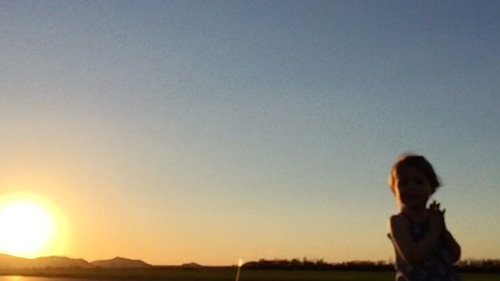Dawn is breaking and the owls are stirring. A young woman has been murdered, but is this truly the end? Based on Percy Shelley’s poem “The Dirge”, Ginevra depicts the aftermath of the death of a young woman. As her distraught mother looks on, she learns that life after death involves a transition she never could have imagined.
Director’s Statement
Max Rothman from Monticello Park Productions approached me with this project, and I was immediately struck with the concept of creating a series of animated short films based on poetry. I agree with his belief that animation has a power to depict imagery and feelings that can be a great complement to poetry.
I had the opportunity to choose which poem I wanted to work with, and I was drawn to the wonderful reading of this particular poem given by Alexana Ryer.The combination with the music was also really interesting: the words of the poem are actually quite dark and morbid, but Jeremy Lloyd-Styles, the musician, had included some moments in the music that you might call ‘soaring’ or spirit-lifting, which seemed to contradict the meaning of the words. How to reconcile this visually so it all made logical sense? This presented a unique challenge as ananimator because usually the music is recorded last, after the video has been produced. I was tasked with crafting a story around the beats of the music and the words that would make the whole thing bigger than the sum of its parts, and the artistic choices of the composer really influenced my writing. I immediately realized that there needed to be some kind of visual revelation during those ‘soaring’ musical moments, even if they seemed to contradict the narration.
Meanwhile, I had done further research into the poem, and realized that The Dirge is actually just the last part of a longer, unfinished poem by Percy Shelley called Ginevra, itself based on a sort of urban legend dating back to Renaissance-era Florence, about a woman who was thought dead, brought to the crypt for burial the next day, and awoke in the middle of the night. It is interesting to think how Shelley would have finished his poem had he himself not died suddenly at sea. In his poem, a bride dies on her weeding night. Would he have had her resurrect?
With this in mind, I realized that I could have the main character come BACK to life, but it still had to be a sad situation, somehow, to correspond to the tone of the narrator’s voice. The speaker is still not happy – What if the resurrection was not a perfect happy ending, but rather still involved some kind of banishment? Eventually I came around to this supernatural idea of a transformation, that, though joyous because it defies death, also means Ginevra will not be able to reside anymore in the human world. To the mother, her daughter is still leaving.
Something about the story and music brought to mind cold, hard-edged paper cut-outs, so I knew I would use this technique in some way. Stylistically I was inspired by Renaissance era fashion and architecture – as that was the era of the original legend – as well as by the futuristic lighting and shapes of Blade Runner, as the music implemented very sci-fi like instruments and tones.
I had worked in paper cut-outs before, but never with top-lighting. I built a larger multi-plane animation stand and developed a paper technique where the cut-outs would be a little bowed, so when lit they could cast shadows. I then used lots of clip lamps, combined with gels and colored papers to create the lighting. All the elements you see on screen are made with cream paper, and all the color is a result of the lighting. After the storyboard was settled, I created one scene at a time – making the cut-outs, setting up lighting, and shooting immediately before filing the cut-outs away and starting another scene. This made it easy to keep track of how big the cut-outs had to be for each scene, and how the lighting needed to be. Because the film takes place from early dawn through to morning, the lighting had to be specific and change gradually from scene to scene. All in all production took about 6 weeks.
See the entire project here monticelloparkprod.com/campfire-poetry



